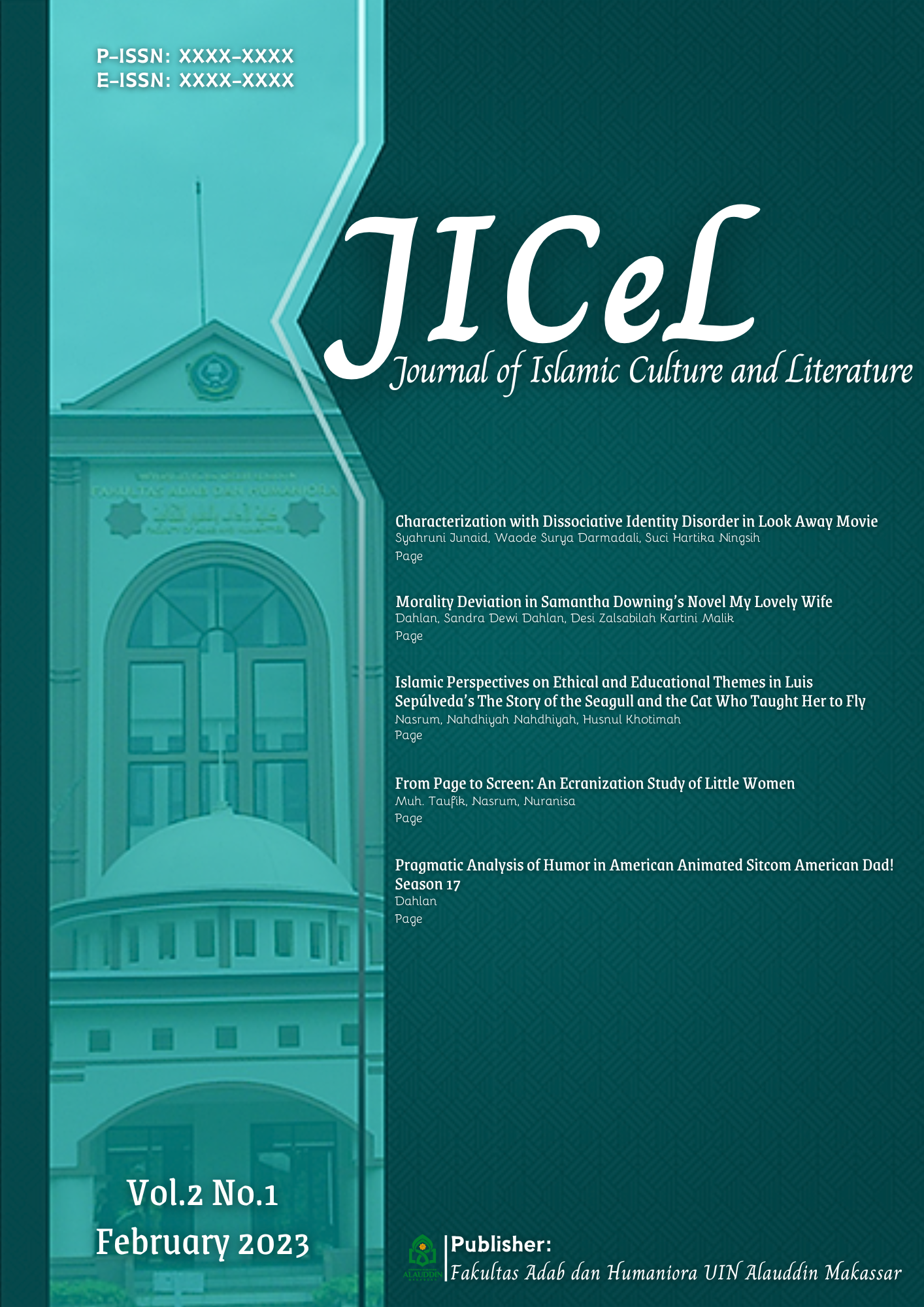FROM PAGE TO SCREEN: AN ECRANIZATION STUDY OF ‘LITTLE WOMAN'
Abstract
This research aims to describe the process of ecranization of the plot, character, and
setting, in the form of categorizing aspects of reduction, addition, and changes varies. This research
used descriptive qualitative and used theory of George Bluestone to analyze the reduction,
addition, and changes varies in ecranizationstudy. The data collections of this research are plot,
character, and setting of novel Little Women which was published in 1868 and the film Little Women
which was released in 2019. In collecting data, the researcher used note taking as the instrumentto
find out the reduction, addition, and changes varies of novel into film. In this research found that
there are changes in the ecranization process. In the novel there isa change in reduction in 3
characters, reduction in 6 plots, and reduction in 1 setting. Whereas in the film there are changes
to the addition of 2 characters, additions to 21 plots, and additions to 3 settings. Variation changes
also occur in 2 characters and 2 plots but the settings are not found. The conclusion of this research
is that the changes that occur in this ecranization process because the director does reduction,
addition, and changes varies only to give the audience a climax and a more interesting storyline.
Authors who publish with this journal agree to the following terms:
1) Authors retain copyright and grant the journal right of first publication with the work simultaneously licensed under a Creative Commons Attribution License that allows others to share the work with an acknowledgement of the work's authorship and initial publication in this journal.
2) Authors are able to enter into separate, additional contractual arrangements for the non-exclusive distribution of the journal's published version of the work (e.g., post it to an institutional repository or publish it in a book), with an acknowledgement of its initial publication in this journal.
3)Authors are permitted and encouraged to post their work online (e.g., in institutional repositories or on their website) prior to and during the submission process, as it can lead to productive exchanges, as well as earlier and greater citation of published work (See The Effect of Open Access).


